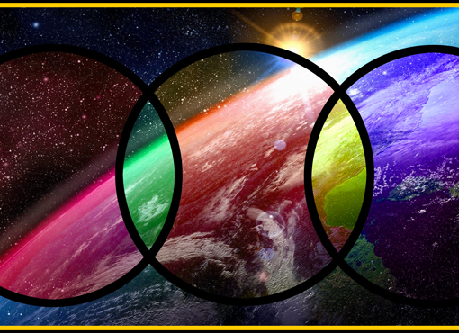The Larch Scape
“No one knew exactly why the glaciations were more rapid and severe on the Larch Scape. The differences in the astronomical parameters were so slight as to be frequently contested by new measurements. The geologists and paleontologists and climate scientists estimated that the point of divergence between the Larch and Austral Scape had to have occured within the last 100 thousand years. That nice, big and round number spoke of a lot of uncertainty …”
“Like the plants, the animals of the Larch Scape had been marked by the glaciations, encouraged to accept humans as a vital ally, to share in their fire and their food. Species that had never been successfully domesticated on other Scapes bent the knee here … “
“[But] on the Larch Scape humans had never managed to extend a sizable population across entire continents, so much of the megafauna considered to be a distant Pleistocene memory on other Scapes had lingered. The mammoths, giant sloths and woolly rhinoceroses were extinct, but there were hyenas, fanged cats and amphicyonids hunting bison, omnivorous deer, glyptodons, great boars, and wild horses too large for men to ride south of the Laurentian Sea, in what was called Illinois on Malone’s Scape. The island of Manhattan was not an island due to the lower sea level, and it was uninhabited by men, an impenetrable mass of old growth larch trees ruled by creatures thought to be related to the raccoon … The atrox cat had been genetically sequenced in cooperation with Austral scientists years ago and determined to be more closely related to the lion than the cougar, and it had enjoyed a range extending north of the Laurentian Sea up to the glaciers until very recently. It was a dark creature with a thick mane in both genders; beside the elements, their prides were the deadliest things to encounter in the far north.”
-Terra Incognita
The Larch Scape is presently experiencing an ice age glaciation, with large sections of North America, Europe, South America and Australia covered in glaciers multiple kilometers in thickness. The Scape has been at least partially glaciated for at least one hundred thousand years, with minimal interglacials. As a result sea levels have dropped significantly, allowing passage by foot between Siberia and Alaska and ice-hopping from South America to Antarctica.
The land is dominated by the eponymous group of ‘larched’ species, which are generally black and cold-resistant versions of more conventional plants. Great forests of larch trees can extend up to the limits of the glaciers and generate a greenhouse effect under their canopy, allowing the Scape to be far less desolate than the climate would normally allow. At some time in the distant past (~50 000 years ago) these plants were genetically engineered by a lost civilization, enabling humans and many other species to cling to existence on the frigid sphere. Civilization has been formed and obliterated dozens of times, with the bulk of the minor human population living as hunter gatherers, or else in minimal villages at the moment of contact with the rest of the Known World.
Despite discovery almost five hundred years ago the Larch Scape remains a frontier, superficially inhospitable due to the extreme cold but in truth almost inhospitable because of the remnant Pleistocene megafauna, which has thrived and diversified in the resilient dark forests. The beasts seem adapted to be consistently more intelligent and aggressive than analogue organisms on other Scapes. North America is home to fanged cats, giant lions, giant bears, hyenas, great wolves, wolverines as large as the bears, enormous boars, amphicyonids, giant horses, aggressive camels, omnivorous deer, murderous otters, and territorial raccoons that will destroy settlements in mobs. Larch South America is dominated by smilodons, more aggressive camels, colossal rodents including an eight-foot beaver, and terror birds. Larch Africa features such dangers as sprinting bears, giant subspecies of lion, leopard and feral dog, a land-adapted hippo, uniquely aggressive herbivores such as rhinoceroses, elephants and cape buffalo, as well as baboons clever enough to use stolen metal tools. Larch Australia bears marsupial lions and dogs, giant relatives of the komodo dragon and crocodile, and cassowaries able to disembowel men with a single kick. Even the territory deemed most habitable by foreign assessment, Larch New Zealand, is plagued by Haast eagles large enough to prey on children and giant penguins that mob and drown swimmers.
The human natives themselves are isolationist and xenophobic, and often made the subject of racial stereotyping regarding them as superstitious, savage, and inhumanly adept at resisting cold, starvation and fighting monsters. ‘Larch’ is used as a synonym for ‘cunning’ and ‘savage’ in the common speech of Austral and Noir peoples; the stereotype has been reinforced by Larch exiles establishing themselves as peerless cold-weather combat specialists in the Noir Scape, and high-profile Larch athletes that dominate in competition with other baselines and even some hybrid leagues.
